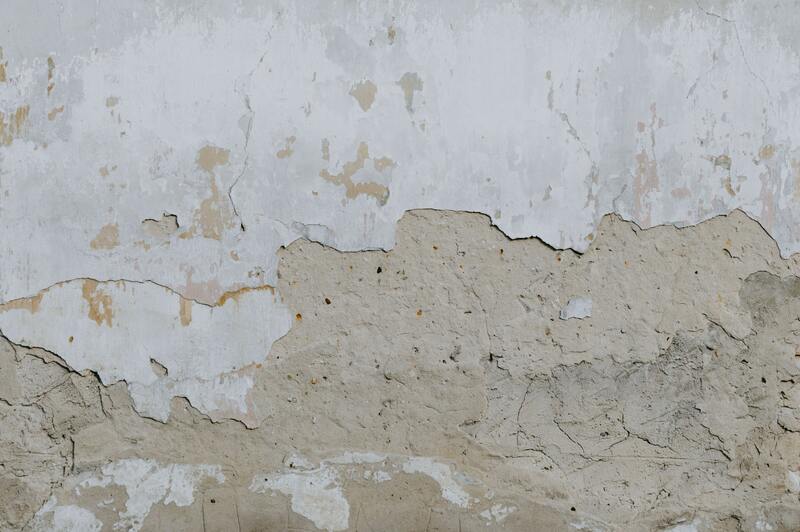Knowing when should one repaint water damaged wall is the first step to revitalize a once-ruined place. However, painting your home’s walls after water damage is not the same as painting normal surfaces.
These surfaces require a little additional prep work to ensure that the coating looks its best—and that it will remain to look that way long after your brushes and rollers have been put away. Here’s everything you need to learn about painting after water damage.

How To Repaint A Water Damaged Wall
The key difference between concealing water damage and a traditional job is that the former needs preliminary work—if you have suffered a leak or spotted a spot of moisture, anticipate there to be more of it.
With conventional painting, you can usually just select a brush and a color of your choice and get to work; utilizing painter’s tape, priming, and other prep processes is optional, depending on your tastes.
When painting over water damage, however, it is critical to examine the issue and determine the type of damage you are dealing with. Follow these steps carefully.
Step #1. Examine the drywall
If you’re operating on walls, evaluate the water content of your drywall before you begin. You can proceed with a primer and paint if there is a water stain but the drywall is still stiff to the touch and otherwise unharmed.
You can’t just paint over a water stain since it’ll bleed through; you’ll need to apply a water or oil-based primer first.
A discolored region that is mushy or saggy to the touch suggests that the drywall has been compromised and has to be changed prior to painting. Replacing drywall is best left to skilled DIYers or professionals, and contacting a professional contractor who can assess the problem is recommended.
If you notice mold, contact a water damage restoration company right once so it can be cleaned or removed before it spreads.
Step #2. Flatten surfaces
You should also inspect the area you’re mending for any damaged, broken, or significantly drooping drywall that needs to be replaced. When water gets behind the paper in your drywall, it can cause ‘bubbles’ in the paint.
If this is the case, you’ll need to use a scraper to remove the loose, peeling paint. Then, using medium grit sandpaper, sand the damaged drywall and fix the area if necessary.
After that, you’ll be prepared to add a coat of primer and then paint.
Step #3. Gather your supplies
To get started, gather the following items: a scraper, putty knife, sandpaper, spray nozzle, drywall solution, paintbrush or roller, primer, and paint. You’ll also need drywall screws if you need to re-secure drooping drywall to the studs (usually in a ceiling).
Step #4. Look out for special materials
When painting over any water-damaged baseboards or crown molding, be especially careful because some of them may be made of wood composite, which will need to be replaced rather than repainted.
The water reacts with the glue that keeps these particle boards together, causing them to swell and become irrecoverable. You’d have to repair the wood in this situation before painting it.
What To Do Before Painting Water Damaged Walls
The first step in this approach is to figure out where the water is originating from. Inspect your roof for cracks if you see leaks during a storm. Look for a split pipe if water is accumulating in your basement.
All of your painting and fixes will be for naught if you don’t properly address and stop the leak. Every time a new leak appears, you’ll have to begin over.
Repairing the damage
If you’ve looked everywhere and still can’t discover the source of water, it’s time to hire a professional to conduct an inspection. It might be difficult to detect faulty caulking or a leaking HVAC system on your own.
Schedule a checkup with an All Dry USA contactor now to find any annoying leaks. You won’t be able to go to the following stage until the breakage or leak has been repaired.
For more information on this, check this article on how to fix water damaged wall paint easily and know as well how much to repair a water damaged wall.
Drying
Before you start painting, make sure the moist areas are totally dry. Wet walls should never be primed or painted.
First, wipe away any visible surface water with a rag you don’t mind discarding. If there is water on the floor, a water vacuum or a shop vac can be used to remove it quickly and efficiently.
However, be aware that these methods do not guarantee that water will not lurk in every corner and crevice.
Professional equipment may be required to completely dry out grout or cracks in a wall. Water damage can also occur behind your drywall, which you won’t be able to access on your own.
However, drying entails more than just eliminating apparent water from the surface. Because drywall is permeable, water can soak right through it.
Raise the windows for a cross breeze, or put in a dehumidifier if you reside in a humid region. For 100 percent effectiveness, this process could take up to 24 hours.
Conclusion
When should one repaint water damaged wall is a good question to start upon experiencing a bad watery fate after flash floods or water leaks. Now that you have reached this part, you can save yourself from future worries!
